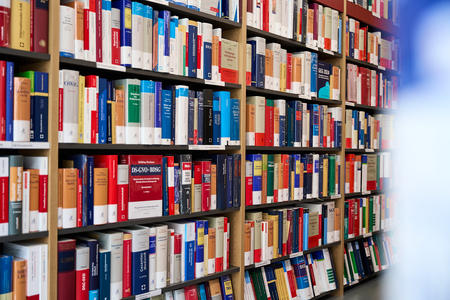The Imperial Qín Dynasty
Produktnummer:
18dbf184b421014f249d7b2c362176db06
| Autor: | Schneider, Marcel |
|---|---|
| Themengebiete: | Calendar decentralization taxation timekeeping |
| Veröffentlichungsdatum: | 16.12.2024 |
| EAN: | 9783110791839 |
| Auflage: | 1 |
| Sprache: | Englisch |
| Seitenzahl: | 260 |
| Produktart: | Gebunden |
| Verlag: | De Gruyter |
| Untertitel: | Elements of Governance as Reflected in the Liye ?? Manuscripts |
Produktinformationen "The Imperial Qín Dynasty"
The Liye ?? text corpus, which is named after an ancient township in present-day Lóngshan ??, Húnán province, grants unique opportunities to reshape the image and redefine our knowledge about social, legal, political, administrative and ritual responsibilities of the first Chinese empire. The impressive collection of over 37,000 documents span a time period from 222 to 208 BC and grant a unique opportunity to reshape the image and redefine our knowledge about social, legal, political, logistical and ritual responsibilities of the first Chinese empire. This book is concerned with the overall governance at the southern fringes of the Qín dynasty as reflected in the excavated documents from Liye well J1. It contributes to a revised understanding of the Qín dynasty by demonstrating that the degree of decentralization in the empire was high and to a large extent coordinated by relatively autonomously governed regions. It furthermore displays the Qín dynasty’s strong sense of historical continuity and a desire to strive towards unification by embracing the predominant standards of earlier rulers. After an introductory part on the Liye material, this book analyzes Qín’s sophisticated methods of calendar and timekeeping. It then dwells into the territoriality of the young empire and focuses on unification attempts bound to transform the pre-imperial multistate order into a standardized system of governance and control. The last part deals with the organization of essential resources, including unprecedented tax calculations ‘district’ (xiang ?) level. Overall, this book offers a fascinating glimpse at the many microstructures and complexities in the peripheral area of a larger administration. The manuscripts available to us to this day and the ones that will be excavated from wells J2 and J3 in the future will undoubtedly continue to be a basic reference point when it comes to the research of pre-imperial and early imperial documents. The Liye ?? text corpus, which is named after an ancient township in present-day Lóngshan ??, Húnán province, grants unique opportunities to reshape the image and redefine our knowledge about social, legal, political, administrative and ritual responsibilities of the first Chinese empire. The impressive collection of over 37,000 documents span a time period from 222 to 208 BC and grant a unique opportunity to reshape the image and redefine our knowledge about social, legal, political, logistical and ritual responsibilities of the first Chinese empire. This book is concerned with the overall governance at the southern fringes of the Qín dynasty as reflected in the excavated documents from Liye well J1. It contributes to a revised understanding of the Qín dynasty by demonstrating that the degree of decentralization in the empire was high and to a large extent coordinated by relatively autonomously governed regions. It furthermore displays the Qín dynasty’s strong sense of historical continuity and a desire to strive towards unification by embracing the predominant standards of earlier rulers. After an introductory part on the Liye material, this book analyzes Qín’s sophisticated methods of calendar and timekeeping. It then dwells into the territoriality of the young empire and focuses on unification attempts bound to transform the pre-imperial multistate order into a standardized system of governance and control. The last part deals with the organization of essential resources, including unprecedented tax calculations ‘district’ (xiang ?) level. Overall, this book offers a fascinating glimpse at the many microstructures and complexities in the peripheral area of a larger administration. The manuscripts available to us to this day and the ones that will be excavated from wells J2 and J3 in the future will undoubtedly continue to be a basic reference point when it comes to the research of pre-imperial and early imperial documents.

Sie möchten lieber vor Ort einkaufen?
Sie haben Fragen zu diesem oder anderen Produkten oder möchten einfach gerne analog im Laden stöbern? Wir sind gerne für Sie da und beraten Sie auch telefonisch.
Juristische Fachbuchhandlung
Georg Blendl
Parcellistraße 5 (Maxburg)
8033 München
Montag - Freitag: 8:15 -18 Uhr
Samstags geschlossen
